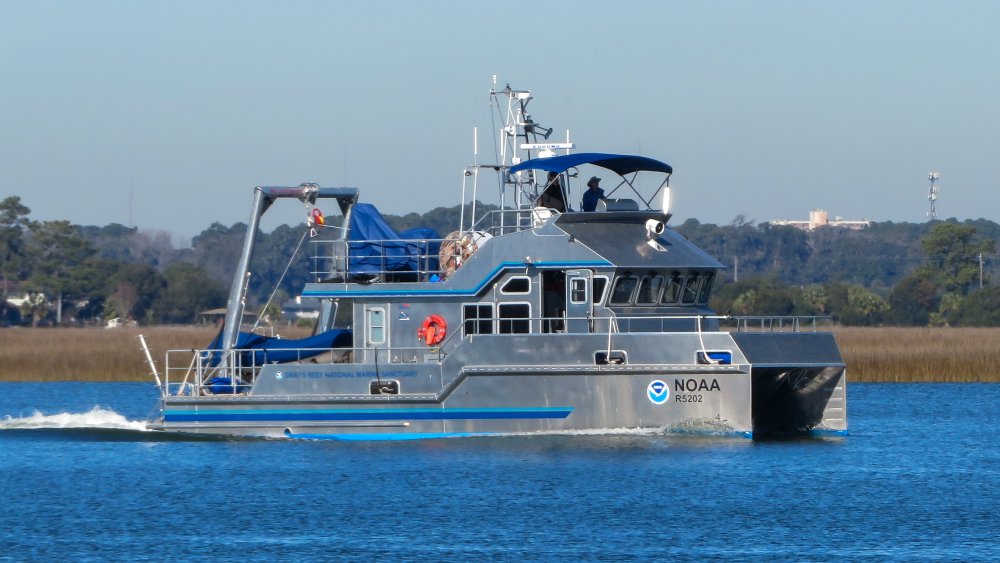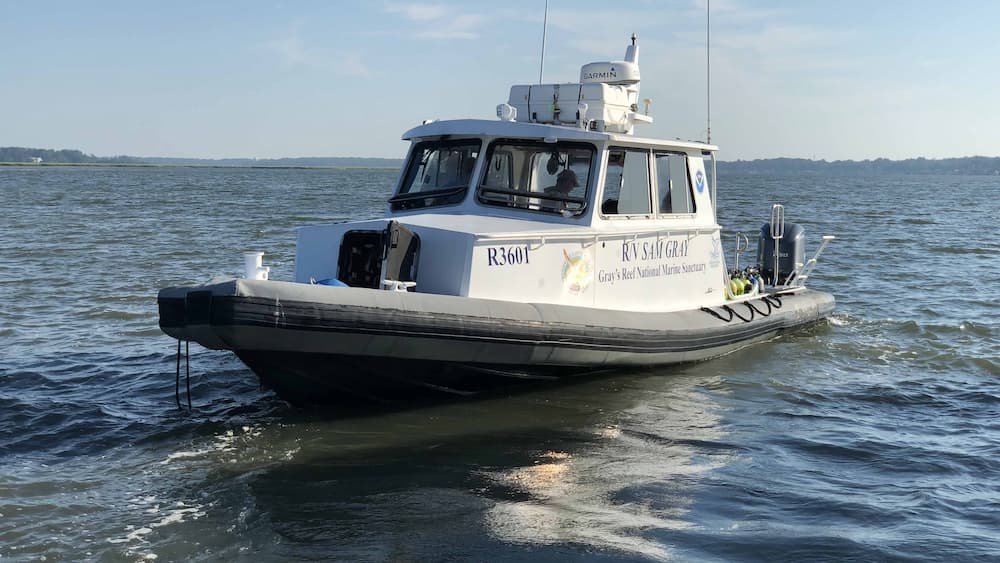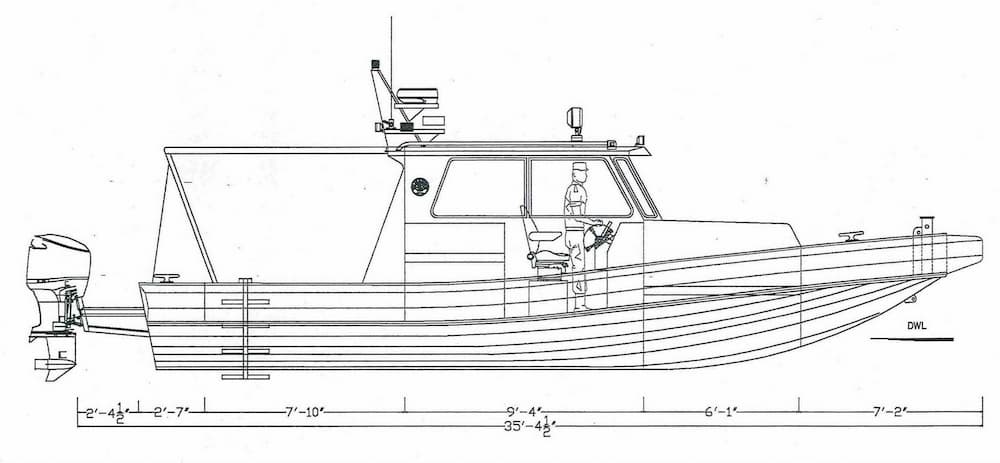Marine Operations
Vessels
The sanctuary operates two research vessels (R/Vs), the 52-foot R/V Gannet and 36-foot R/V Sam Gray. Both are used for research and monitoring, diving, education and public outreach, and testing emerging technologies. The sanctuary fleet logs as many as 80 days-at-sea a year supporting the missions of the sanctuary and partners. These days-at-sea yield research data that contribute to continued protection of resources within the sanctuary, and also reach the public through staff's participation in outreach events and publications by our staff and partners. Additionally, the NOAA Ship Nancy Foster supports multi-day expeditions in the sanctuary hosting larger teams of scientists.
R/V Gannet was built in 2023 by All American Marine, Inc. Washington. The Gannet is built to navigate inland waterways and offshore ocean routes, primarily serving as a research equipment and dive platform for Gray’s Reef National Marine Sanctuary and partners throughout the South Atlantic Bight. This vessel can accommodate up to 15 passengers and three crew. Its twin engines provide speed and exceptional fuel efficiency to achieve NOAA and partner missions. The vessel is named for the Northern Gannet seabird.

R/V Sam Gray was built in 2004 by Silver Ships Inc. Alabama. The vessel was designed for speed and maneuverability, is a rigid-hull inflatable boat, and is equipped with features to allow easy deployment and recovery of divers and specialized ocean technologies such as gliders and small ROVs. It has a trailer that allows for easy haul out for maintenance and multi-location deployments. The vessel is named after Milton "Sam" Gray.


| R/V | Built | Length | Draft | Cruise Speed | Crew | Passengers | Engines |
|---|---|---|---|---|---|---|---|
| Sam Gray | 2004 | 36' | 2.5' | 26 Knots | 2 | 6 | Gasoline outboard |
| Gannet | 2023 | 51' | 5' | 23 Knots | 3 | 15 | Inboard diesel |
Technologies
As new technologies emerge, sanctuary staff incorporate them to improve and diversify the site's mission capabilities. The site is currently working with a small business contractor to develop a one-of-a-kind underwater remotely operated vehicle (ROV) that is gentle enough to not disturb the underwater habitat, while photo and video documenting behavior and areas that are normally hard to or impossible to explore by diving. For more details on how these technologies support research, please visit Technologies.

